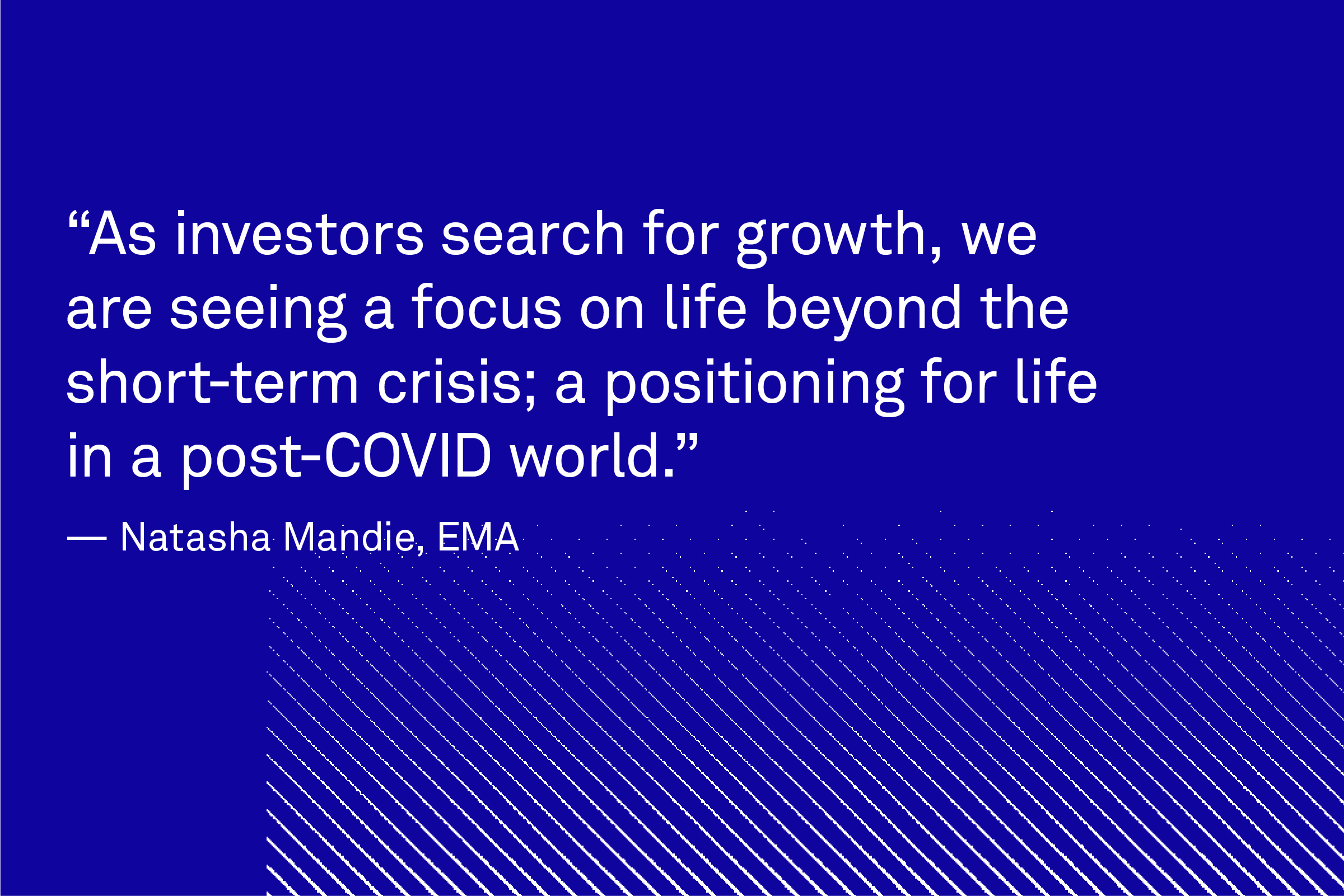Controversial view: It’s never been a better time to do a deal
- Covid-19
- , From EMA

After the initial shell shock of the market turmoil in March and April, we’ve seen an unprecedented focus on capital raisings across all sectors of the market as well as a surge in mid-market M&A (with apologies to our friends doing > $1Bn deals that have declined dramatically). While the battle against COVID-19 continues to disrupt the Victorian economy and the operations of all businesses, there has been an increase in transactions to help shore up balance sheets, drive growth and position for the future.
Many industries are in historically low growth environments and are experiencing further disruption from the COVID lockdown and restrictions. For others, COVID has accelerated drivers of their business as everyone moves more of their lives online.
Investor demand has been remarkably resilient. As investors search for growth in historically low interest rates, we are seeing a focus on life beyond the short-term crisis; a positioning for life in a post-COVID world. This has seen an embrace of different business models, and those companies embracing structural changes in the economy.
Redbubble is a prime example. During COVID it has been an outperformer, leveraging the shift to e-commerce and the accelerated activity on online platforms. They launched face masks in just weeks, and after falling to all-time lows in March 2020, have seen an 8x increase in valuation. They are now looking at index inclusion, much broader investor acceptance and investors are recognising the global opportunity and jumping on board.
It’s a long way from the scepticism evident during the IPO in 2016, or the up and down share price over 2019, when the questions were “how are you going to be disrupted by the majors?”, “when will profit grow?” and “how can you be so dependent on Google?”. Now, the question is “how are bigger businesses dependant on digital companies and a disruptive approach to old ways of doing things?”
Redbubble is ultimately the same company today as it was 6 months ago – the investment and vision of its founders, management and Board drove an investment in scalable platform business and a focus on unit economics (but not at the expense of infrastructure required to scale). This ability to see past the (albeit frustrating) short–term market focus and volatility is so important when assessing these wonderful successes. The factors that drove Redbubble’s success, its culture and team that allowed it to work so effectively in the disruption of COVID, were driven by long–term strategic vision and decision making.
Even in these crazy times, many investors recognise that investments made now in the “right” companies are creating unprecedented opportunities and they are prepared to take risk to find these deals. The question is, what makes you the right deal?
Now more than ever, you need to create confidence and have a long-term view. With the current flurry of capital raisings, the focus is on sustainable competitive advantage demonstrated through real data, metrics, and coherent strategy. Telling your story simply, and supported by transparent data has never been more important.
But is it the same for M&A? Is this the right time to sell or, like in 2009, is it a buyer’s market? On the sell-side, the fear of doing a bad deal is increasing and in contrast to the capital raising approach, many buyers are trying to reduce risk through competitive processes. But in these processes, even with strong buyer interest there is significant fear and reluctance to bid. This is particularly true where there are risks and business challenges.
So how do you reduce the risk of your sale process? Historically, competitive processes were seen as the best and simplest way for a seller to reduce their risk. However, in the current environment, the risk of external shocks, continuing lockdowns and broader economic uncertainty mean that drawn out processes carry a heightened risk level.
What happens if NSW is shut down? What impact will the U.S. election have on market confidence and access to capital? What will China do next? These unknowns mean you need to act quickly to build confidence, to balance the need for a competitive process with the right approach, the right process, and the right terms.
The new world of doing business without physical contact is one of the challenges. Creating confidence is hard in a digital environment where you can’t eyeball someone and meet face-to-face in your own city, let alone travel interstate or globally.
Here’s a few tips of ours (on the house):
- Defining success matters, know what is important to you and know your timeframe.
- It’s not enough to have a goal, you need an executable plan to deliver with data to support it.
- Growth is not a single person game; you need an incentivised and aligned team.
- Clear and effective leadership is key, you need to demonstrate how you have led through the last 6 months.
Generic competitive processes are unlikely to succeed in the current environment. What you need is to prioritise your goals and create a tailored process to meet that goal – one that provides the right conditions for buyers or investors to build confidence. Confidence and relationships have never been more important. They require investment of time and many zoom calls, but done well – this can deliver a result.
If you want to raise capital or do M&A, get moving. Investors are ready to hear your story, so make it compelling and remember; it’s never been a better time to do a deal.